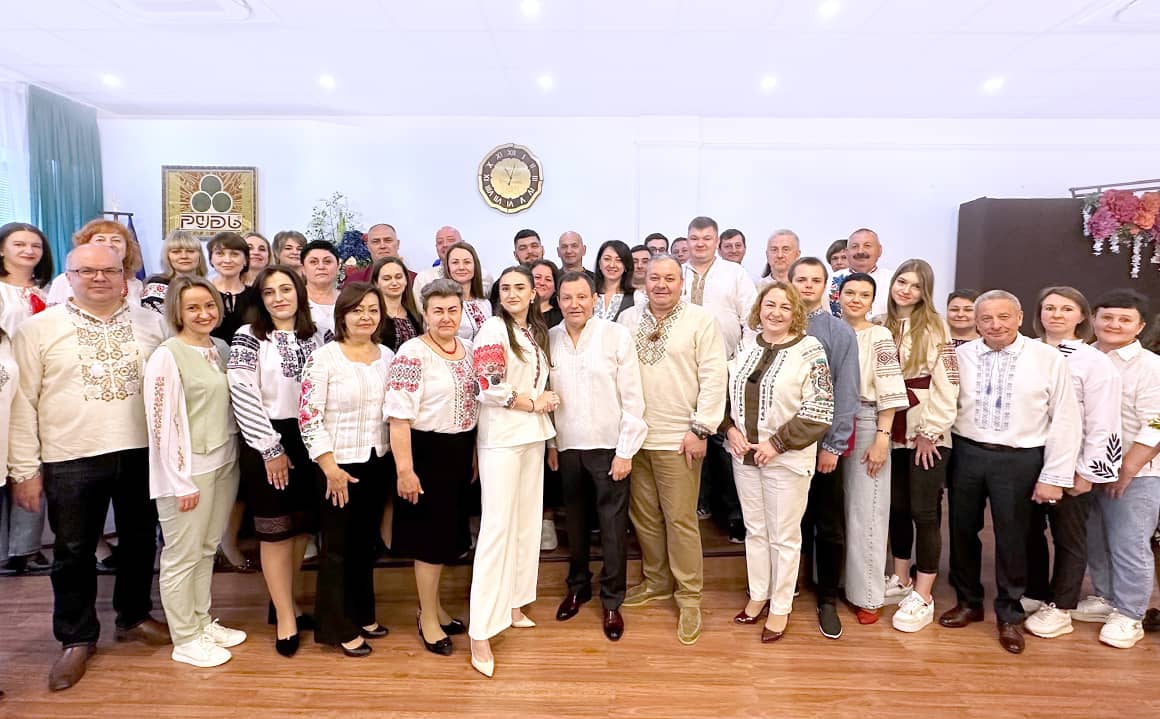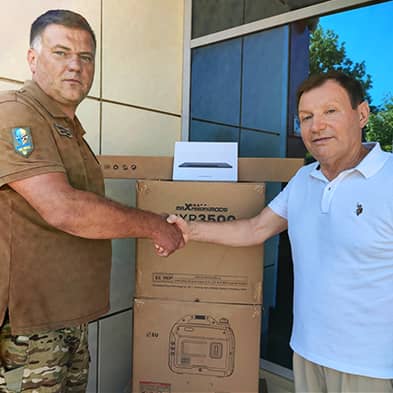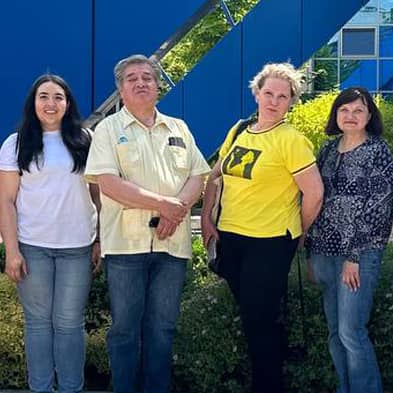
The Rud team joined in the celebration of Vyshyvanka Day. The festivities aim to preserve the ancient folk traditions of creating and wearing Ukrainian ethnic embroidered clothing, so this day is celebrated by wearing a vyshyvanka.
For Ukrainians, embroidered shirts called vyshyvankas are a symbol of national identity. However, they are currently worn all over the world as a sign of support for our culture and traditions, taking on special meaning during the war. Today, Vyshyvanka Day is honoured in more than 100 countries, achieving a global status.
Ukrainian embroidered shirts are being worn by presidents, politicians and public figures of other countries to signal their solidarity with Ukraine. Famous designers are inspired by vyshyvankas when creating their collections.
In peacetime, public events devoted to the history and culture of embroidered shirts were held on Vyshyvanka Day. There used to be educational exhibitions, lectures, flash mobs, public marches in vyshyvankas, music shows and film screenings. Historically, embroidered shirts appeared on Ukrainian lands before the 6th century.
In the old days, vyshyvankas were made from home-woven fabrics. The whiter and thinner the fabric, the higher the value of the shirt. Wealthy families embroidered them with coloured silk with gold and silver threads, while Ukrainians of more modest means used ordinary threads.

People have always believed that embroidery protected the wearer. Each region of Ukraine can boast of its unique embroidered ornament. You can find various geometric shapes, squares, diamonds, crosses, as well as floral and animal patterns.
Researchers of Ukrainian embroidery have catalogued over 200 ancient stitches based on 20 embroidery techniques (plain stitch, spike stitch, bottom hole stitch, knotted stitch, lace stitch, twisted stitch, cutwork, gouge embroidery, trestle stitch, braid stitch, mesh stitch):
- Black is the predominant embroidery colour in the Ternopil region. According to legend, once upon a time, the Tatars killed all the men in the region. The ground turned black from the spilt blood. The surviving women swore to the dead that for the next seven generations, they would wear only black vyshyvankas.
- The central regions of Ukraine often embroidered with white threads, highlighting the pattern definition rather than on the colour scheme.
- White-on-white embroidery was a speciality of the Poltava region.
- The Zhytomyr region had a preference for geometric patterns, mostly red threads on a white background. Shirts sported grapes as a symbol of the family and viburnum signifying Ukrainian spirituality.
- Vyshyvankas from the Sumy region were heavy on birds and flowers.
- Clear and small cross-stitch patterns were popular in the Chernihiv region.
- The Kyiv region favoured the combination of white, red and black as well as floral motifs.
- In the South, you could see many unique cross-stitched designs that often featured floral motifs.
- The western regions of Ukraine were rich in floral and bright ornaments.
- In the eastern regions, embroidery leaned towards red and black (Donetsk region) or red and blue (Luhansk region), with lush flowers and trees.
Types of ornaments and techniques differed not just from region to region, but also from family to family. They were passed down from generation to generation. This is how vyshyvankas became an integral element of Ukrainian culture, history and the “genetic code” of the Ukrainian people.







_65cfb92e561ed.jpg)
